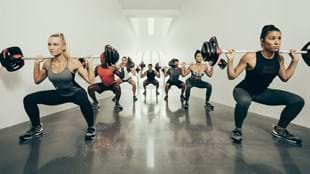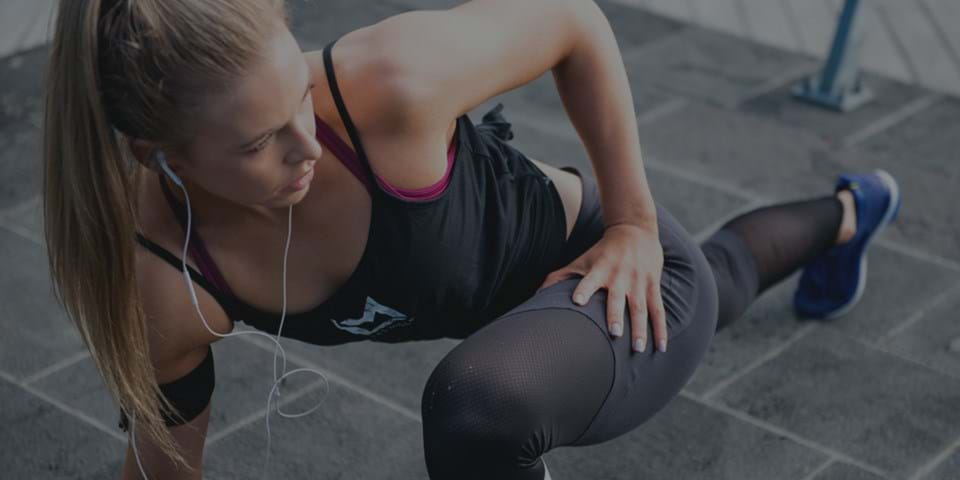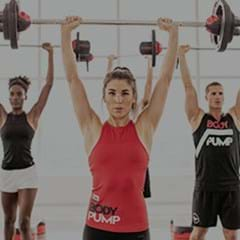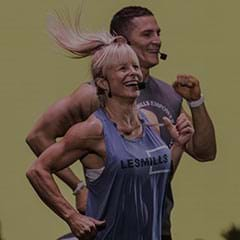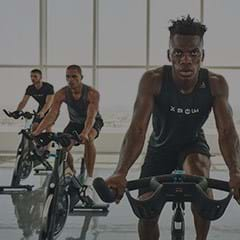We’ve long known that when it comes to resistance training it’s fatigue, not load, that generates change within the muscle – and there’s plenty of research to back it up. We also know that maximizing fatigue comes down to manipulating range of movement and repetition speed. New insights now clearly show that pulses are a great way to maximize fatigue when lifting light weights for higher repetitions.
What do pulses do that full-range exercises don’t?
The team in the Les Mills Lab set out to measure the difference in muscle activation between full-range squats and squat pulses.
Here’s what we found:
Full-range squats, as you’d expect, fire up all the global muscles that drive your body away from the ground. This highlights how full-range squats are great for working the glute max, rectus femoris and the hamstrings.
What we see with squat pulses is a more isolated activation of the quadriceps muscles closer to the knee. The activation of these muscles is key for stabilization.

We see a similar pattern when comparing the activation levels of the key muscles involved in a full-range chest press with pulses.
This is what we found:
Again the full-range chest presses resulted in activation of the key push pattern muscle groups, the pec major and anterior deltoid. As soon as we introduced a pulse action we saw a significant increase in the activation of lat dorsi, again acting as a stabilizer.
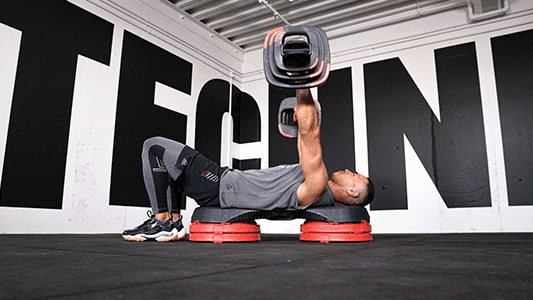
IN SUMMARY
These findings highlight how combining pulses with full-range exercises changes activation patterns and allows you to engage all the key target muscles. This is the secret to maximizing fatigue and driving muscle change.
What’s the difference between a pulse and a bottom half?
If you’re a BODYPUMP regular you’ve probably very familiar with both the terms “pulses” and “bottom halves”. Both movements are designed to help maximizing fatigue by manipulating range of movement, yet there are slight differences. Pulses are much smaller in amplitude and involve moving just a few inches above and below the point of maximum tension (e.g. bottom of a squat or mid point of a bicep curl). Bottom halves work a larger range from halfway up to the bottom of the movement.
PULSES ARE BASED ON THE SCIENCE OF OCCLUSION TRAINING
Occlusion training (often termed blood flow restriction training) commonly involves wrapping a pressure cuff around your limb to restrict blood flow of a working muscle. When this happens the low oxygen level in the muscle forces your body to recruit fast-twitch muscle fibers and lactic acid accumulates, which accelerates change within the muscle. Engaging in pulses creates a similar effect as using a pressure cuff, as the small range of motion restricts blood flow to the muscles, and that’s when the transformative effects kick in.

Bryce Hastings is a leading New Zealand physiotherapist and fitness expert. As Les Mills Head of Research he leads research into the most effective approaches to exercise and plays a pivotal role in structuring all LES MILLS™ workouts. Bryce’s passion for effective exercise is born from spending 30 years in physiotherapy, where he saw “people getting their lives wrong” every day and felt like he was acting as an ambulance at the bottom of the cliff. By working in fitness he gets to be the fence at the top.
If you want more health and fitness inspiration simply sign up to Fit Planet and get the freshest insights and advice straight to your inbox.



